Вы здесь
Petroglyphs of valley Kaishi.
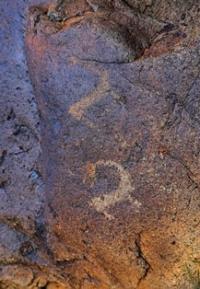
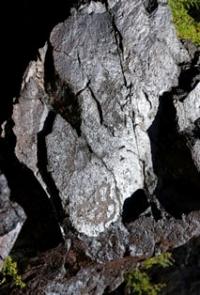
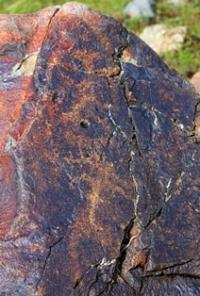
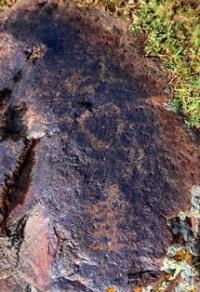
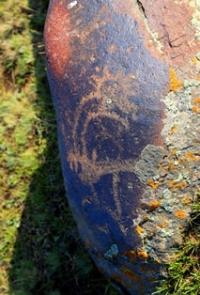
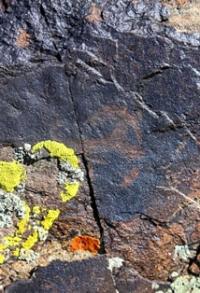
Photo tours to Kazakhstan petroglyphs.
“There are never too many good experiences!” When you are enthusiastic about something, you want even more enthusiasm. When the joy of unity with people close in spirit is overwhelming, I want this feeling to be always updated..."
Vera Linkova.
Photos of petroglyphs of the Dzungarian Alatau.
Preliminary studies of the Kaishi rock art monument were carried out in 2011; their results were published in 2012. (Potapov et al., 2012). In his foreign publication, the author publishes material on three or four monuments located relatively compactly on the southern slopes of Zhetysuysky (Dzhungarsky) Alatau and its western spur Koyandytau (Herman, 2011), including the already famous monument Usek (Maryashev, Goryachev, 1998).
Being published in Europe and in a new format (books by Demand) remained unnoticed in Kazakhstan. The published monuments, with the exception of Usek, need more thorough investigation than a single inspection, and publication of the materialized systematized. Investigations of the Kaisi rock art monument located in the foothills of the Koyandytau (southwestern spur of the Zhetysuysky (Dzhungarsky) Alatau) were continued independently by B.A. Zheleznyakov.
In 2013, several hundred more boulders with images were examined. Already during the short-term reconnaissance in June 2015 with the fixation of the most valuable planes with petroglyphs carried out on the monument, a previously unknown plane with a whole loop of smaller animistic images was recorded.
Based on the results of preliminary studies of 2011 in terms of its artistic value and uniqueness of images, as well as a component of the landscape, it is Kaisi that stands out by its scale in comparison with two other monuments (Sarytau, Sarybastau), first published by L. Hermann.
Also with Usek, in the number of petroglyphs, as well as a significant number of petroglyphs of the Bronze Age and a certain sequence in the transition to images of the early Iron Age. On the one hand, due to the wider chronological dating of the Kaisi petroglyphs, where even in the Bronze Age unique masterpieces that “presented” the views of that era were knocked out, a certain “understatement” was compensated by a high level of imagery, which sharply changed the appearance of petroglyphs is closer to the transitional stage to the early Iron Age.
The mythology of that dynamically developing society of the steppe zone of Eurasia no longer “fit” into the predominantly naturalistic, but completely static images of obese animals representing the “heavenly flock”.
Like, however, other anthropomorphic images, some depicted priests during rituals, including “sunheads,” who also symbolized the luminary in different cycles, obviously, during its movement in the daytime or night sky (rather, corresponds to the image of the "moon-headed").
Acquaintance with neighboring civilizations did not leave a choice in the purposeful and dynamic achievement of high goals. Society has come to the peculiar edge of the old worldview and, accordingly, to the existing system of its reflection in the art of its era.
The images of the rock art of Kaishi, this relative recently discovered monument of rock art, clearly confirm this assumption. It is known that on the periphery of the Eurasian civilization of the early Iron Age, for example, in the forest zone, such a vivid "animal" style of development did not receive.
For obvious reasons development in the era of the early Iron Age, for example, in Scandinavia, where a huge number of boats were knocked out. There are more orders of magnitude (in image density) than chariots in Central Asia (Dodd, 2010).
Particularly clearly, researchers cite images of boats, which, of course, have characteristic chronological features. For example, in middle bronze: 1600 - 1100 BC. The images of the noses of the ships were "inward", in late bronze, 1100 - 500. BC. - “out”, ending with an animal face.
During the Early Iron Age, 500-300 g. BC. the images of the boats (their noses) were symmetrical. Dodd in the diagrams and descriptions brings the images of boats to 400 CE, but these are rather symbolic signs that simplified this canonized image as much as possible and it looked like a symbolic sign rather than real boats and ships which they used (Goldhahn, Ling, 2013).
The general fine tradition of Northern Europe "survives" until the Vth century. AD, that is, even in the late stage of the early Iron Age, the change of eras did not affect the main plots of Scandinavian rock art (Dodd 2010, Goldhahn Ling 2013, 283) and images on artistic bronzes (Kaul, 1998, 134), the style changed but not the images themselves.
As a result, by this time there the tradition of cave paintings was lost. As scientists confidently suggest, boats were the “vehicle” of the sun across the horizon (Kristiansen, 2012, 74 – 78). In Central Asia, the development of mythology and the means of its artistic expression, the images that embodied this ideology, were much larger and not only due to the rich diversity of the animal world. Identification of patterns of development of rock art iconography in this region is a much more difficult task.
In the 2012 domestic publication of Kaishi's petroglyphs, it was noted that the monument is located on a former moraine slope dotted with, among other things, large enough rounded boulders of granite rocks covered with patina that has formed on their surface since ten millennia from the glaciation periods.
The figures were engraved on a significant number of boulders, the number of fixed surfaces clearly exceeded five hundred (full fixation of petroglyphs is required). Until now, the boundaries of the monument have not yet been clarified (if on the moraine part of the plateau they are localized by the presence of boulders that are convenient for knocking out on patinated surfaces, then in the piedmont part on the surface of the rocks they can stretch for several kilometers on both sides).
A significant area, where rocks and stones with petroglyphs can still be located, remains unexplored. Even on the most studied Tamgaly monument, finds of new images happen. The first reconnaissance of archeological monuments of the southern spurs of the Zhetysu Alatau region (Prijungarya), organized by the reserve - the Tanbaly Museum and personally by the director E. Zhanpeis, was carried out together with the Abylkhan Kasteev Art Gallery (Zharkent) in 2011.
Then, in Kai-shek, only a compact moraine (relatively flat) part of this monument, with an area of approximately less than 1 x 0.5 km, was fragmentarily viewed. It is noted that most of the images belong to the Late Bronze Age and the initial stage of the Early Iron Age.
Apparently, the natural conditions of that historical period contributed to the development of this landscape niche precisely from the end of the IInd millennium and in the first centuries of the Ist millennium BC. Although, as further studies have shown, there are earlier images.
The monument also noted numerous masonry of stones (fences) of considerable size, dug into the ground, the structure of which also needs documentation and research, as well as burial mounds. The plane on the rock with embossed images - a single composition of two large deer and smaller various animals oriented to the west.
The rock with the images of animals (two large - obviously heroes of the myth - deer and a significantly larger, but strictly dosed number of images of other species of animals ¬ smaller) is located in the area of the counters, where the slopes of the southern spurs hang over a smoothly descending south of the main ridge Koyandytau mid-mountain plain plateau Kayshi (height 1770 - 1800 meters above sea level). Nearby, in the gorge, a source of water should have been located, which had dried up by our time.
Local granite rocks have a weak patinization and the drawings are not quite legible in the photo, including due to the abundance of small animals depicted and the renewal of large horns of the central image. This plot was discovered on a vertical surface of a rock, convenient for drawing and viewing the vertical plane of a rock with a flat surface formed by a cleavage located 2.5 - 3 km from the main cluster of petroglyphs.
There are also several other different images of different times, mainly goats, belonging to the early Iron Age. But, apparently, with an early dating and significant size, this image is the only one. The horns of the central and largest male deer are knocked out in a different, different manner from the horns of the neighboring large image of a female deer and small deer, and other types of similar animals, that is, a manner in which the whole story with animals and birds was originally executed. In addition, the entire silhouette of the central embossment is deepened, obviously, after the horns, which were renewed in the form of rounded horns, in contrast to the initially vertically-branched form of horns, symbolizing the world tree.
Perhaps the phallus was knocked out at the same time, since none of the small animals has its image. It should be noted that, mainly due to additions and renovations, not the entire plane is clearly “read”. So, there is a darker knock-out between the new, heraldic horns, apparently, it is the narrowly located and short horns that were originally from the central male deer.
Four figures are depicted above the female (one of which, “sprouts”, continues her horns). Most likely, the birds in the background are quite large in size, bear heads with short beaks on their long necks, presumably from the order of bustards.
The most important dominant image in the animal pantheon of the Scythian-Siberian style of Central Asia is the deer (Bobrov, 1973). As you move west, the number of these images decreases (Korolkova, 2006, 39). M.P. Gryaznov also convincingly showed that in the Sayano-Altai region in the culture of the early nomads of the 1st millennium BC.
Portrayed a red deer (maral). Correspondingly, in the deer from Kayshi we most likely observe the “eastern” (relative to Zhetysu) tradition of images and mythological and poetic content (Altai and further east and southeast) of images (Davlet, 2009, 99, table. 47 ), brought here, apparently, already at the middle stage of the Bronze Age.
A significant number of subjects have been noted in Kai-shek that can surely be dated, at least, by the late stage of the Andronovo culture (knocking out chariots, solar “eyeglass-shaped” signs, and much more). Even richer is the late stage of the Bronze Age: argali "with stars" on the horns, ornamental and mythological constructions with camels inside the circle.
Two large deer, 47 x 80 and 49 x 67 cm in size, are knocked out on the surface of a separate rock fragment located on a relatively steep slope of a rock fragment, measuring 1-1.5 x 1.8-1.9 m. were of paramount importance to the "users" of this plane.
The remaining images of animals had, by the time the horns of the main character were renewed, "background" significance. The scene contains animals: two large deer, several small animals: a bull, a goat, located next to the long antlers of the second deer, stylized under the "world tree", as if jumping out of its curls, as well as deer, next to the legs of the first.
Moreover, if the image of all animals is made in the same style, then in front of a standing deer, with "strange" horns, clearly resembling the shape of a "mask" - a lighter and deeper embossment. The central image - the male was updated relatively soon, as it seems to us, after knocking out the whole scene.
This can be seen in the photo under oblique lighting, in relief deeper embossment. The “new horns” required careful “driving” and, possibly, polishing of the old ones. In addition, in the “broken” - renovated horns, a mask is traced, rather, a more complex sign, combining several fundamental images, deer horns - mask (fire-sun) - the World Tree.
Apparently, a simple interpretation of the complex sign “horn-tree” did not satisfy the group of people from which the artist embodied these images on the Kaisi rock. In addition to the more complex semantics of the image, it also carried the significance of a different locality, where such personalities were apparently more widespread.
It is well known that cave paintings of mask masks had a wide distribution region from Western Siberia to Amur. Considerable literature has been devoted to the study of the problem, and indeed we do not have the opportunity to devote considerable attention to it. Mention M.A. and E.G. Devlet (Devlet, 1997; Devlet, Devlet, 2006), Yu.N. Yesina (Yesin, 2012), A.L. Zaika (Zaika, 2009).
The phenomenon of images of masks in the Bronze Age cultures of the region is comprehensive, beginning with the early Okunev and other cultures of Southern Siberia. At the same time, it is clearly dissonant with images of the Bronze Age of Western Eurasia.
The dating of the main scene should not be different from the traditional for these plots - Siberian, where such plots date mainly from the Bronze Age. “Primitive-naturalistic images of deer with two woody horns and four legs” can date from a wide chronological period ”(Devlet, 2009, 40 - 41).
However, similar to our horns, clearly hypertrophied, similar to the images on the monument of Mozag Komuzhap, MA Davlet most likely dates from the Bronze Age (Davlet, 2009, 40 - 41). A similar, but still simplified image of an animal with high branching horns is placed on the cover of a well-known monograph...
Perhaps we can definitely judge this, in our case, this is the late stage of middle bronze or already late. If you agree that we are not just horns, but a silhouette of a mask where hair and a beard are rays (otherwise, why was there so much work put into changing their shape?).
Moreover, it is well known that the “mask - mask” is directly related to the symbolism associated with the veneration of fire and light (Mikhailov, 2004, 23 - 24). Such an interpretation agrees well with the features of this image and with its dating, when the "duality" of visual perception, as it were, "multiplied" the energy significance.
Apparently, following the tribes from Western Siberia that could not (mythologically) exist without the image of a deer (with tree-like horns), tribes from Eastern Siberia came for whom a similar interpretation of the horns of a key character for the locality was fundamental.
Obviously, it was possible to find a suitable plane without difficulty, but this was a fundamental issue of ideology. The tree-like horns themselves symbolized the altar / place where the main altar of the area was located, where the Act of Origin/Creation was worshiped.
The “Sun-faced” face added to this ritual the tradition of worshiping the sun, making this image more complex. The image of the female (left), however, was not required to be turned into a “sun-faced” one. The stylistics of the image of the horns of the mythological deer, close to the interpretation of the Siberian "sun-headed" mask, testify to the syncretism of the image and the corresponding attempt at synthesis in ideology.
The chronology of the appearance of illogical images in the Okunev, Karakol, Samus cultures differs quite a bit from researcher to researcher, right up to the Neolithic, but by the general conclusion, it had a stable existence at the turn of the III – II millennium and at the stage of degeneration it “survives” to the early Iron Age.
In Kai-shek, one petroglyph of the "sun-headed" is still recorded. It is located to the right of a small human figure on one of the small and very numerous boulders in the lower (central) part of the monument, which predominantly dates from the Bronze Age.
It is knocked out directly above the ground, as if without a special image in front of the object. Studying the monuments of rock art of the late Bronze Age and the transitional stage to the early iron suggests that the tradition of “sunheads” is obsolete at a certain stage in the development of mythology in the general striving for allegorical and zoomorphization of the image series.
Kuzmina devoted one of her works to deciphering the semantics of the torment scene, made an attempt to establish and trace the development of this motive in Eurasian art. Referring to the opinions of researchers of the Near Asian art on the astral-cosmological nature of such compositions and citing her own arguments, she concludes that the semantics of the tormented scenes is reduced to the symbolism of the spring revival and royal power (Kuzmina, 2011).
Apparently, the scenes of sacrifices (bulls, horses, other animals, people with bows, dog baiting and other pictorial measures) precede chronologically chronologically, which have a wide time range. This opinion is debatable and not accepted by the researchers.
Considering the art of Scythians and Saks, one involuntarily draws attention to the fact that in the western part of this world considerable attention was paid to anthropomorphic images. This could be associated with Greek influence, but more logically with the Scythian genealogical legend. More others wrote about him D.S. Raevsky (Pogrebova, Raevsky, 2005, 584 - 585).
The images of animals with horns, in addition to the traditional perception as dominant males, apparently also had one more, rather purely mythological significance. Tree-like or curved horns pointed to spiritual life and power.
Taking for consideration one of the images of argali, you involuntarily notice a clear emphasis on the main solar sign - the sun in all its manifestations: light, heat, life, etc. he figure depicts two arharas, obviously of the early Saka time, one of which can be completely described as a “sunhead”.
In style, there is still a promise to the naturalness of the Bronze Age, which largely dominates, however, the transition has already taken place, judging by the interpretation of the legs. But, at the same time, it is important that the horns are “not up to the grain”, they are crowned with the symbolism of the sun, which was “revealed” in this way for new converts, already departing from the understanding of the basic images of the Bronze Age and accustomed to other visual symbols with that the same meaning, for example, burial mounds, costume ornament; the images become much more diverse and more and more emphatically transmitting “prototypes” associated with the sun.
The Akterek rock art monument has been studied by B. Zheleznyakov and L. Hermann for several years, and preliminary results have been published (Hermann, Zheleznyakov 2016; Zheleznyakov et al., 2017).
Authority:
Boris Zheleznyakov "The rock plot from Kaysha." Zheleznyakov B.A. The reserve-museum "Tanbaly", p. Kargaly, Almaty region “History and Archeology of Semirechye”, Almaty, 2017.
Photos by
Alexander Petrov.







